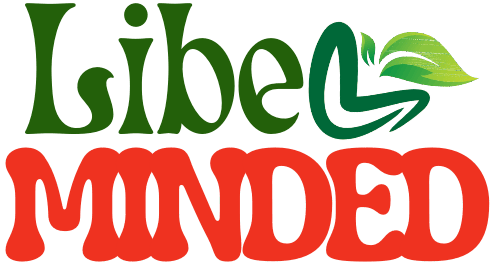Now and then, an odd code appears online, mysterious and technical. It’s strange enough to provoke concerns in the public. In recent times, “30.6df496-j261x5” has made its way into food forums, recipe blogs, and on social media, making people wonder whether it is an ingredient. Food additive? Or something else that could be more harmful?
If you’ve come across this particular code but wondered if it’s safe to use it in cooking and cooking, you’re not the only one. I’ve spent hours exploring scientific databases as well as regulatory archives and food safety sources to find out the meaning of “30.6df496-j261x5” could be and what its presence in food-related discussions actually means.
Table of Contents
The Origins of 30.6df496-j261x5: Where Did It Come From?
In contrast to recognized food additives, such as E300 (Ascorbic Acid) or E621 (Monosodium Glutamate), 30.6df496-j261x5 doesn’t appear in any food safety registry worldwide.
I searched the official databases listed below:
- FDA’s Food Additive Status List (U.S.)
- European Food Safety Authority (EFSA) Additive database
- Codex Alimentarius (WHO & FAO)
There are no matches, there is no chemical history, and there is no safety classification. This means that it’s not an acknowledged ingredient, preservative, additive, or processing aid within any regulatory system of major importance.
Where did this mysterious code come from?
Numerous indications point towards an unregulated, unidentified substance (or internal production code) that wasn’t intended for public use. A few reports have linked the phrase to a leak of data or a mislabeled packaging issue where a production code was misidentified as a name for an ingredient.
However, in today’s fast-moving digital environment, misinformation is spread quickly. A random code could become the form of an “ingredient fashion” before anyone can determine the truth of it.
Expert Concerns: Why This Code Raises Red Flags
Food safety professionals advocate an important rule of thumb: if an ingredient isn’t on the official register and is not listed in the official registry, you shouldn’t cook using it.
As per the U.S. FDA According to the U.S. FDA, each ingredient or process agent that is used in food products is subject to testing to determine toxicity, allergenicity, as well as metabolic security. If something such as “30.6df496-j261x5” is found to be without a trace of scientific research, it violates the rules of transparency modern food safety relies on.
Lack of a label is a sign of warning,” notes Dr. Laura Nguyen, a food scientist and researcher on toxic substances. “Unknown labels can conceal something in the industrial environment, chemical solvents, or even the toxins from manufacturing.”
There’s more to it than just the toxicity. If this code is referring to a synthetic chemical or lab-grade substance, eating it could cause thermal instability. This means it is broken down by heat to create harmful byproducts, which you wouldn’t want to see on your food plate.
Understanding Food Coding: What a Real Additive Code Looks Like
To understand how bizarre “30.6df496-j261x5” is, it is helpful to know how food additives are legitimately identified.
K, for instance:
- E200-E299: Preservatives
- E300-E399: Antioxidants, Acidity regulators
- E400-E499: Thickeners and emulsifiers, and stabilizers
Every single one of them is monitored internationally as well as toxicologically evaluated and is publicly recorded. Chemical identity, permissible limits, and manufacturing processes are all made clear.
However, “30.6df496-j261x5” doesn’t fit either of these systems. The pattern of it could be an internal code, not a regulatory code. It could equally be a part of an industrial or batch number or a series of chemical tests that is used in a laboratory or in a factory.
This is the reason why the internet discussion is so threatening. If someone is actually trying to utilize it in cooking, they may introduce untrue ingredients into food products that are not intended to be eaten.
Why It’s Spreading: The Internet Effect
What is the reason that a code like this suddenly pops up on the food industry’s blogs as well as TikTok videos? The same reason that urban legends and false health tips are a hit.
It could have started as clickbait or a misinterpreted image, or an AI-generated recipe error. Since smaller websites took it on, often without verifying the source, the story morphed into a “food mystery” that sounded sufficiently scientific to be credible. Websites such as GatorGross or IQMagazines have attempted to explain the matter and warn readers about cooking with ingredients that aren’t known to them. Yet, their explanations are laced with insufficient information, as there’s no reliable source to refer to.
It’s not an instance of secret culinary innovations. It’s a cautionary tale from the digital age of how codes that aren’t contextualized could be unsafe when applied to food items.
The real risk is playing with the Unknown
Let’s make it clear that there is no evidence that 30.6df496-j261x5 is safe, palatable, or is related to food in any way. Making use of it in recipes can cause you to be exposed to:
- Chemical toxicity from industrial-grade chemicals
- Unknown substances can trigger allergic reactions.
- The byproducts of thermal decomposition (toxic gases and residues)
- It is impossible to trace the absence of traceability and discern in the event of infection or illness.
Even a small amount of food can pose health hazards when it’s not intended to be consumed. Food safety starts with traceability, which means knowing how your food is prepared, the source it came from, and how it’s controlled. Anything that does not follow this chain should not be allowed into your kitchen.
What You Should Do Instead
If you find a label or product online recipe that includes “30.6df496-j261x5,” treat it as a red flag immediately.
Here’s what experts suggest:
- Do not use it or play with it.
- Inform the local authority for food safety or your local consumer protection agency.
- Choose trustworthy brands that provide the most precise ingredient lists as well as certificates (FDA, ISO, Halal, and more).
- Be wary, particularly when sources on the internet employ technical terms that are not contextualized.
Real science is verified. Real ingredients can be traced. Everything else is not Rodit’s safety.
Final Thoughts: Food Safety Is Not a Trend
In the end, it’s not a tale about a code that’s not clear. It’s a reminder to be curious, but it must be balanced by the need for caution. We live in a time in which misinformation is more prevalent than the law, and one popular phrase can overcome the years of consensus in science.
Its code “30.6df496-j261x5” might sound like a technically sound, but behind that alphanumeric string lies the simple truth that if we’re unable to identify it, verify it, or believe it, it’s not appropriate within our meals.










